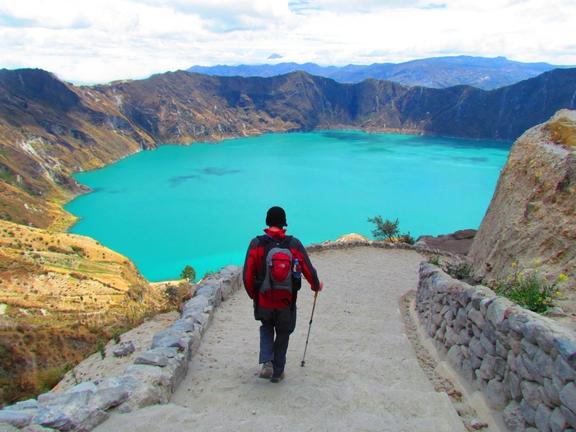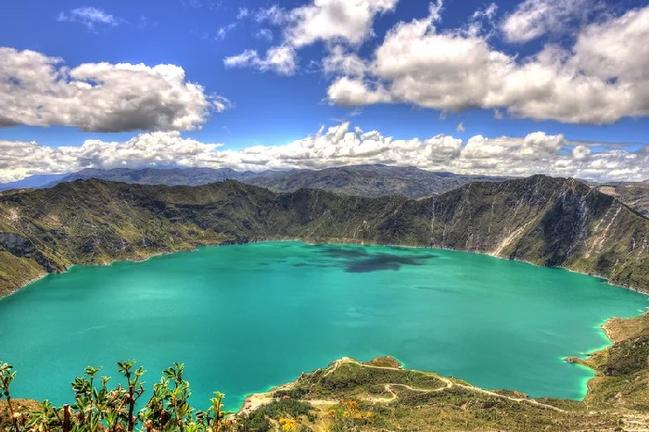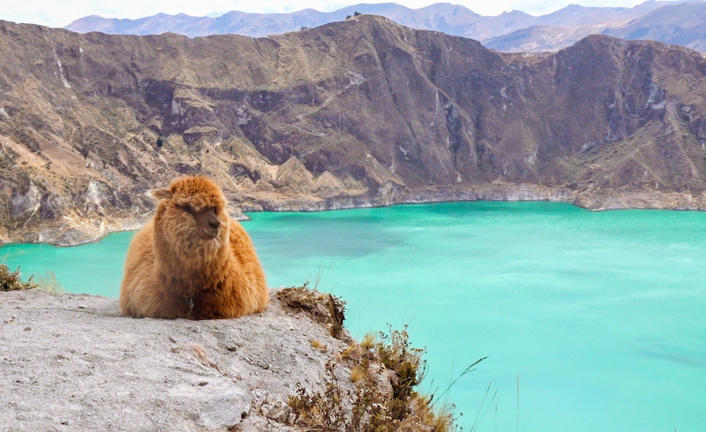Quilotoa is a water-filled caldera and the most western volcano in the Ecuadorian Andes. The 3-kilometre (2 mi)-wide caldera was formed by the collapse of this dacite volcano following a catastrophic VEI-6 eruption about 600 years ago, which produced pyroclastic flows and lahars that reached the Pacific Ocean, and spread an airborne deposit of volcanic ash throughout the northern Andes. This last eruption followed a dormancy period of 14,000 years. The fourth (of seven) eruptive phase was phreatomagmatic, indicating that a Crater Lake was already present at that time. The caldera has since accumulated a 250 m (820 ft) deep crater lake, which has a greenish color as a result of dissolved minerals. Fumaroles are found on the lake floor and hot springs occur on the eastern flank of the volcano.
Quilotoa is a tourist site of growing popularity. Activities include a four to five-hour hike around the caldera (whose diameter is just over 3 km). The caldera rim is highly irregular and reaches its maximum elevations (3810 m to the N, 3894 m to the NW and 3915 m to the SE) at three lava domes. The 10 km hike is sandy and steep in places and can be quite taxing, particularly if there is fog.
Another popular option is the half-hour hike down from the viewpoint (and 1-2 hour hike back up the 280-meter vertical ascent). If you don´t feel like hiking back up, you can rent a horse or mule to take you back.
Within the community of Quilotoa you have several great local restaurants and a very nice souvenir center.



